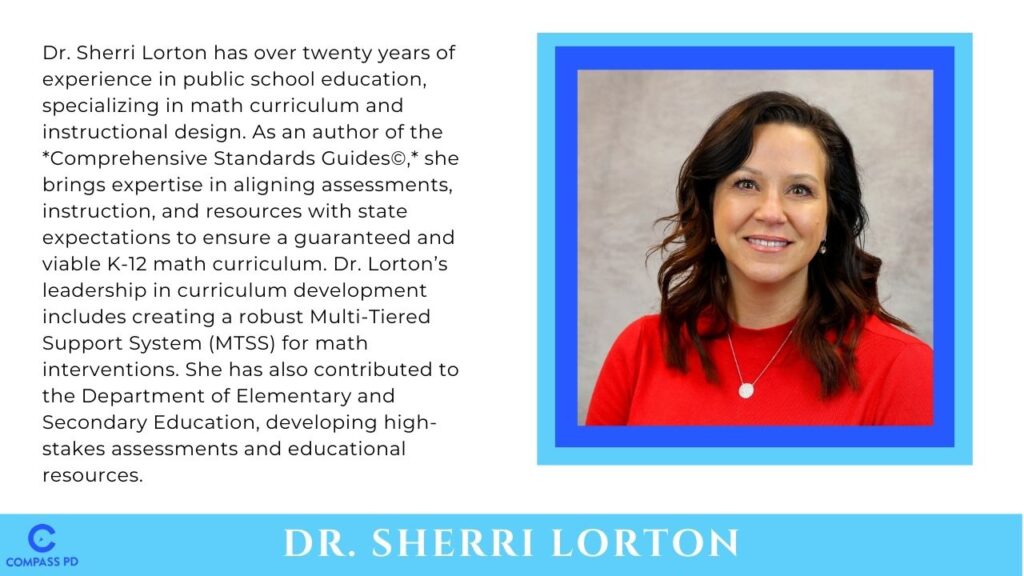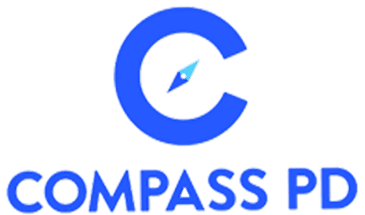From Pilot to Purchase: A Practical Guide to Selecting Core Instructional Resources Part 1: Setting the Stage for a Successful Pilot
Dr. Sherri Lorton
In today’s educational landscape, selecting the right core instructional resource is more than a textbook decision—it’s a commitment that can shape teaching and learning for years. With high stakes for instructional alignment, usability, student outcomes, and community confidence, the process of evaluating and adopting a new resource deserves deliberate, collaborative planning. In an ideal world, I would prefer this process to occur over two school years. Of course, your own district’s circumstances may allow you to expand, or force you to limit, the time for this process.
This two-part blog series walks through an adaptable process for running a successful pilot, grounded in a recent elementary math pilot but applicable to any subject or grade span. In Part 1, we focus on the foundational steps: forming a representative team, clarifying purpose, selecting pilot materials, and recruiting participants.

Forming a Representative Team
One of the first and most critical steps in launching a resource pilot is forming a team that reflects the diversity of your district’s classrooms. In my most recent district, the team was built through an open application process that emphasized K–5 balance, building-level representation, and a mix of primary and intermediate voices.
While some buildings had more applicants than available slots, the district maintained transparency in the selection process and later provided other avenues for input. Ultimately, the team included 19 teachers across all six grade levels and 10 elementary buildings, supported by three instructional coaches who attended meetings as they were able. While this only comprises less than 1% of district elementary teachers, having a larger team is a challenge when scheduling, collaborating, and making decisions.
Potential Pitfall: Disappointment or disengagement from staff who applied but weren’t selected.
Solution: Clearly communicate selection criteria and create structured opportunities for all staff to offer feedback throughout the pilot process.

Clarifying the Purpose and Vision
Before reviewing resources, it’s essential to align the team around a shared purpose. The district used its initial meetings to:
- Study state standards
- Identify priority standards
- Review teacher survey data regarding needs and wants
- Analyze current instructional gaps, based on testing data and anecdotal records
This process led to the creation of an Instructional Vision for Elementary Math, articulating what a student of mathematics should be able to know, understand, and do mathematically in our district, as well as what the district wanted from a new core resource. Only after this groundwork was complete did the team create a customized scoring guide for evaluating materials.
Potential Pitfall: Rushing into resource selection without a clear instructional vision.
Solution: Start with the standards, teacher input, and research (including current educational research, local teacher and parent surveys, and student data on summative and high-stakes assessments) to co-construct the criteria to guide decision-making.
Selecting What to Pilot – and How
Having already reviewed our current standards and priorities, we needed to ensure any resources selected had a solid alignment. Recognizing that not every resource is guaranteed to have perfect alignment, the team must seek out those with high alignment and must also identify gaps. Gaps may need to be filled with other resources or through instructional practices. For example, a resource may not address a standard at all, or only touch on a priority standard 1 time, where our recommended best practice is at least 7 times.
With vision and criteria in hand, the team reviewed a wide range of math resources using a scoring rubric. Five programs were shortlisted for vendor presentations. As vendor presentations were being secured, we shared general categories from our rubric so that all companies had the opportunity to address our big ideas. Additionally, we communicated how we were planning to set up our pilot so they could consider how they could support us during the pilot process. Two programs emerged as front-runners, warranting a full pilot.
Potential Pitfall: Letting marketing bells and whistles or popularity drive decisions.
Solution: Anchor all evaluations in a consistent, research-informed rubric.

Recruiting Pilot Participants
After selecting the programs to pilot, the district expanded its participant pool through targeted building-level outreach. Approximately 10% of classroom teachers and one special education teacher participated, representing every elementary school and grade level. Each teacher had a partner at their grade level, where possible, to support collaboration.
To provide the best feedback without bias, all teachers piloted both programs selected for the pilot. When everyone can participate fully in both programs, they can evaluate pros and cons and make comparisons. Without this step, teachers often become attached to one program and unwilling to consider the alternative or compromise.
Due to cost constraints and limited vendor-supplied materials, some interested teachers could not participate directly. However, the district prioritized equity across schools and ensured robust support for those included.
Conclusion
A successful pilot begins long before students crack open a textbook. It starts with a representative team, a shared instructional vision, and a structured evaluation process. By investing time in planning, districts can build trust and gather meaningful insights that lead to better resource decisions.
In Part 2 of this series, we’ll examine how to support teachers during the pilot, collect stakeholder feedback, and move from evidence to adoption.
References:
EdReports. (n.d.). Evidence-based reviews of instructional materials. https://www.edreports.org
Education Development Center. (n.d.). Guidance for curriculum review and adoption. https://edc.org
Institute of Education Sciences. (n.d.). What Works Clearinghouse. https://ies.ed.gov/ncee/wwc/
National Institute for Excellence in Teaching. (n.d.). Best practices for instructional materials pilots. https://www.niet.org

